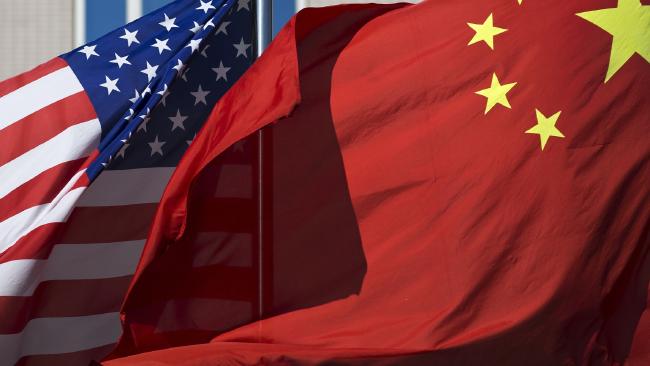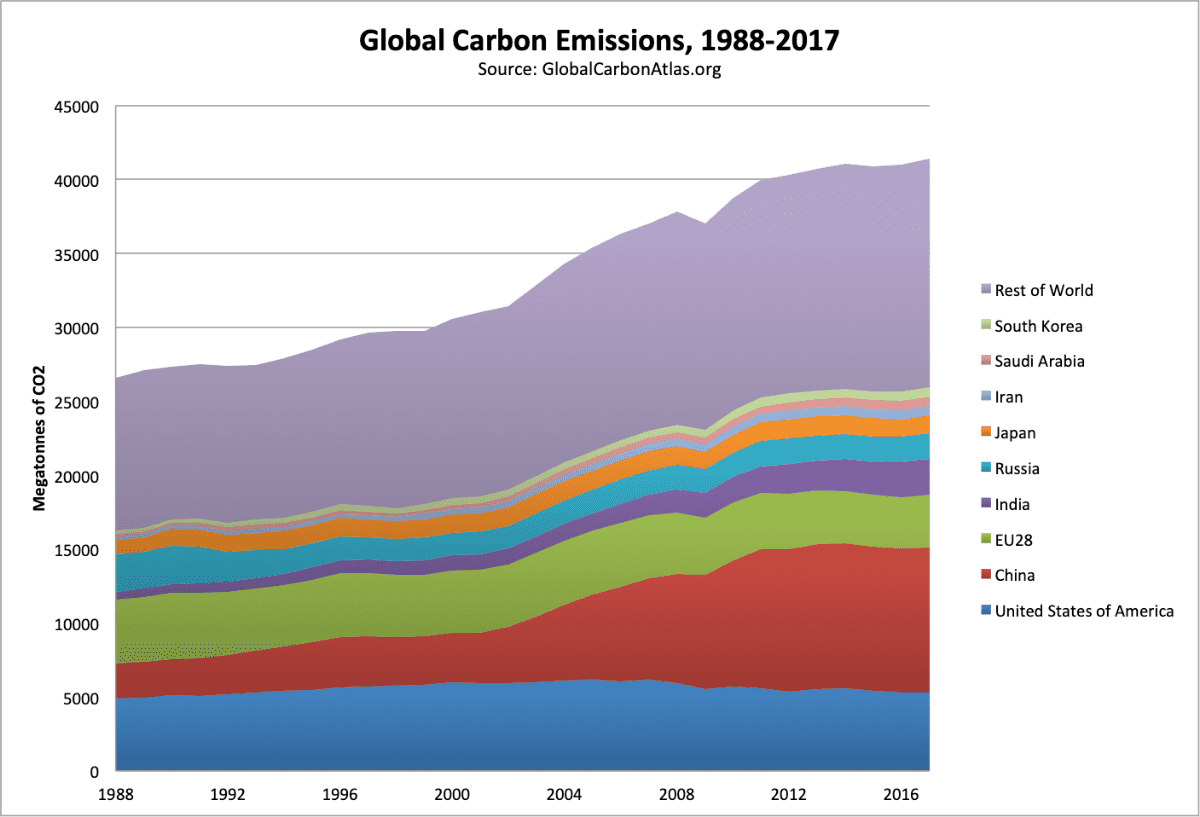
The US and China Must Find a Way to Work Together
The fate the global climate relies on the US and China working together
The first in a series on renewing US-China Climate Action
The most important bilateral relationship for the next president will be with China. It is no exaggeration to say that decisions made in 2021–2025 will determine whether the rest of the century is one of peace and prosperity, or one of conflict and competition. This relationship goes far beyond the military or economic competition that you hear about in Washington. The disturbing trajectory of global greenhouse gas emissions means that every person on earth will be impacted by decisions made in Washington and in Beijing.

Emissions by Country: US and China are 42% of Global Territorial Emissions
In Washington, it appears the China Hawks have forged a bipartisan consensus in favor of confronting Beijing. Certainly, some Chinese actions have deserved confrontation. Chinese military investments directly threaten regional stability and have drawn confrontation with the US Navy. Chinese cyber capabilities have advanced from industrial espionage to more dangerous threats to American military capacity. Chinese technological investments have deliberately targeted next-generation technologies like Artificial Intelligence. Chinese economic policy has deliberately favored domestic “national champions” while stealing from American competitors.
These are all reasons to confront China as it rises. And previous Administrations should have done more to confront Chinese abuses of the global trading system, intellectual property rights, and military expansionism. But, the next President must not let confrontation on these issues undermine efforts to work with the Chinese on other important issues. Perhaps the most important issue — one we no longer have the luxury of waiting for — is climate change. For the sake of the planet, the next President will have to find a way to work with China.
Put together, the US and China make up 42% of global greenhouse emissions. And that is growing. Without action by both countries to reduce their own emissions, the world is locked into over 2 degrees C of warming- blowing past the limits set in the Paris Agreement. If the two leading emitters are unwilling to reduce their emissions, why would the rest of the world?
American and Chinese climate policies rebound far beyond their borders. China’s Belt and Road Initiative will build infrastructure, power plants, and transport links around the world. Will these Chinese investments lock in clean, green growth, or will the Belt and Road simply be a way for China to export its dirty coal and pollution heavy growth model? Right now, it’s unclear. President Xi Jinping has made an effort to tout “open, green, and clean growth” at Belt and Road summits, but policies on the ground show investments in coal power and heavy industry.
In the US, it is no exaggeration to say that the Trump Administration has been a disaster for the climate. By rolling back Obama-era power plant and fuel economy regulations, they have renewed hope for coal power and gas guzzlers. Fortunately, markets and state level regulations have limited the damage so far. New coal power remains uneconomical, and the electricity grid is getting clearer. As a result, though, US emissions have reversed a decade- long downwards trend and ticked up by 3.4% in 2018.
Perhaps the most damage, though, that Trump will do is outside America’s borders. His “Energy Dominance” agenda has increased fossil fuel exports, particularly oil and gas, around the world. So far, his Administration’s sabotage has not yet derailed the UN climate negotiations, and may even have strengthened the Paris Agreement among other nations. But another 4 years would certainly undermine the global effort to reduce greenhouse gases.
Let’s be clear about the stakes. Failure by the United States and China to curb their emissions will lead to a world that breaks through the 2 degree threshold determined in Paris. That’s a world where seas could rise by 9 feet or more, inundating coastal mega cities from Shanghai to New York. A world where once fertile bread baskets like the North China Plain or California’s Imperial Valley are wracked by droughts and extreme weather, threatening food security. A world where conflicts in unstable countries could spread into regional crises, unleashing unprecedented refugee flows. Neither country wants such a future; that’s why the US and China must work together to avert such a future.
When I see Democrats in Presidential debates supporting President Trump’s aggressive posture against China, I worry that they don’t know the stakes. We must not allow misguided notions of competition to blind us to the need to work together. In future articles, we will explore how to work together on technology, deployment, and global aid.





